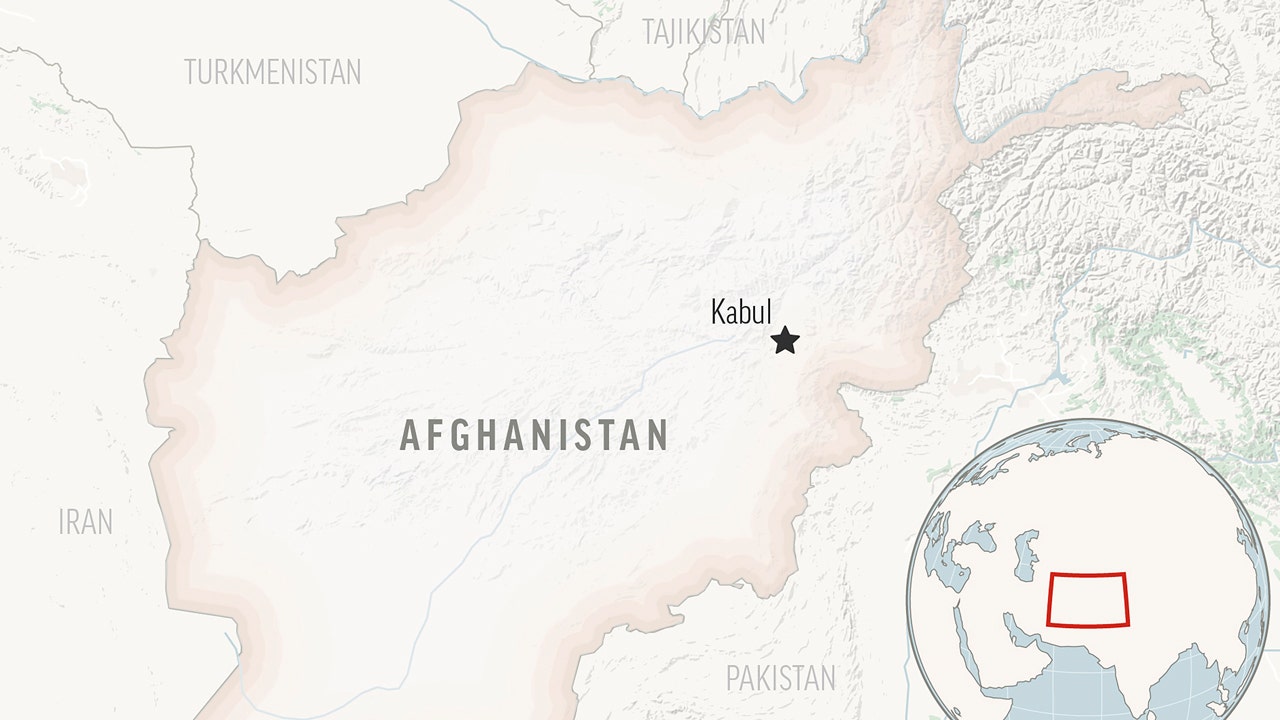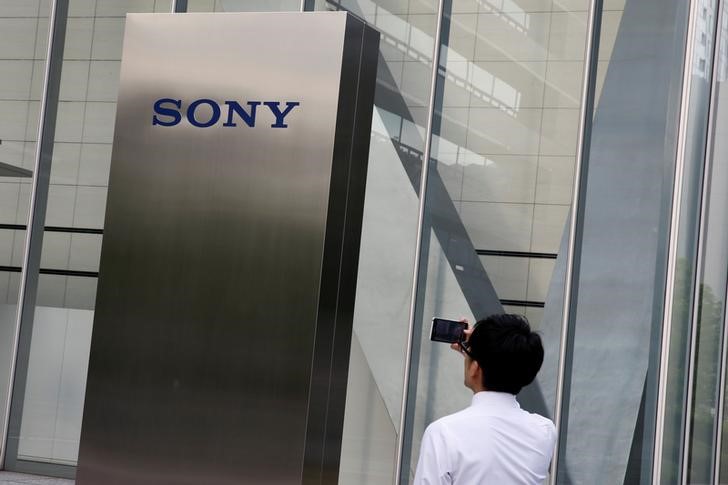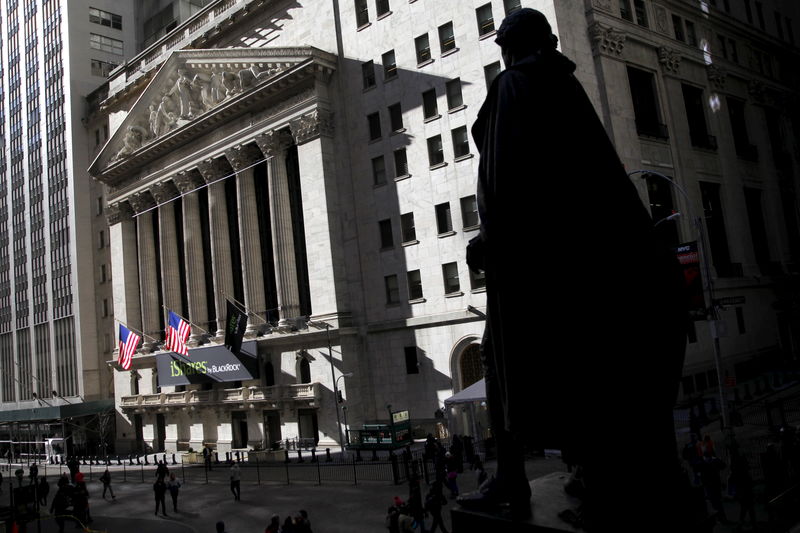Russel Metals, a leading metals distribution company, has reported a strong start to 2024 with solid margins and returns in the face of steel price volatility. During the first quarter results call, Executive Vice President and CFO Marty Juravsky discussed the company’s financial performance, including $1.1 billion in revenues, an EBITDA of $84 million, and an EPS of $0.82. With a net cash position of $277 million, Russel Metals (RUS) plans to redeem $150 million in 6% notes and has declared a 5% increase in their quarterly dividend to $0.42 per share. The company is also focusing on strategic growth through acquisitions, facility modernizations, and value-added projects.
Key Takeaways
- Russel Metals reported Q1 2024 revenues of $1.1 billion, EBITDA of $84 million, and EPS of $0.82.
- The company has a strong financial position with a net cash of $277 million and plans to redeem $150 million in 6% notes.
- A 5% increase in the quarterly dividend to $0.42 per share was announced.
- Russel Metals is actively pursuing acquisitions and modernizing facilities, with a focus on value-added projects.
- The Samuel acquisition is being revised with a new timeline commitment to the Competition Bureau.
Company Outlook
- Russel Metals is working on various initiatives to reengineer its earnings profile, aiming to raise the cycle floor, reduce volatility, and grow the business.
- The company has a capital deployment of $1.4 billion, with increased working capital and project spending.
- They are looking to transition to a more traditional investment-grade capital structure.
Bearish Highlights
- There was a slight decrease in tonnage and a slight increase in cost per ton in the Service Centers segment compared to the previous year.
- The Samuel acquisition will not close in Q2 as initially planned, requiring further work with the Competition Bureau.
remove ads
.
Bullish Highlights
- The company saw an improvement in gross margin per ton from Q4 to Q1, despite lower market plate prices.
- Russel Metals plans to continue expanding margins through value-add projects and equipment upgrades.
- They are monitoring industry pricing, which could be stabilized by recent price increases from Nucor (NYSE:) and Cliffs.
Misses
- No specific misses were highlighted in the provided context.
Q&A Highlights
- The company discussed potential acquisitions, emphasizing a strategy focused on smaller, incremental opportunities rather than large deals.
- In response to questions about steel prices, they acknowledged the potential positive impact of recent price announcements on market stability.
Russel Metals is positioning itself for future growth with a strong balance sheet and a focus on strategic initiatives. The company’s efforts in upgrading equipment, modernizing facilities, and pursuing acquisitions are aimed at enhancing their market position and providing value to shareholders. With a clear plan to improve their capital structure and a commitment to returning capital to shareholders, Russel Metals is navigating the challenges of the steel industry while setting the stage for sustained success.
Full transcript – None (RUSMF) Q1 2024:
Operator: Good morning, ladies and gentlemen, and welcome to our 2024 First Quarter Results Call for Russel Metals. Today’s call will be hosted by Marty Juravsky, Executive Vice President and Chief Financial Officer; and John Reid, President and Chief Executive Officer of Russel Metals Inc. Today’s presentation will be followed by a question-and-answer period. [Operator Instructions]. I will now turn the meeting over to Marty Juravsky. Please go ahead.
remove ads
.
Marty Juravsky: Great. Thank you, operator, and good morning, everyone. I plan on providing an overview of the Q1 2024 results. And if you want to follow along, I’ll be referencing the PowerPoint slides that are on our website. Just go into the Investor Relations section, and it’s located in the Conference Call submenu. If you go to Page 3, you can read our cautionary statement on forward-looking information. So let me start with a little perspective on Q1. And I think about the quarter, it kind of highlights 2 key things. First, how we performed during periods of steel price volatility. Over the past couple of quarters, the benchmarks for sheet and plate have swung up and down by a fair amount, probably around 20%, give or take. And not only have we generated solid margins, earnings and returns over the past few quarters, but has been with relatively low volatility as compared to the underlying steel price environment. In the past, steel price volatility has occasionally led to significant inventory impairments and margin compression. And I think we are starting to see the benefits of our business changes with more of those opportunities on to come. Second, there have been a lot of behind-the-scenes initiatives that provide us with the springboard for the balance of 2024 and beyond. One, we have a series of our equipment upgrade and facility modernizations that are starting to come to fruition in Q2, Q3, Q4 and beyond. Two, we’ve set the stage for further enhancements to our debt structure that should lead to more flexibility and a lower cost capital structure. And three, we are continuing to look at new potential acquisition opportunities in addition to the extensive planning that is being done for the Samuel’s acquisition. So let me now go through some of the materials and let’s start with market conditions on Page 5. As said earlier, we’ve seen the underlying steel prices exhibit a fair amount of volatility over the past while. That said, hot-rolled sheet prices appear to have somewhat stabilized after hitting a trough in late March. The other interesting observation is that when we look at the trough price points that have been experienced over the past 18 months, HRC prices have bottomed at levels that are well above historical troughs. This speaks to the steel producers demonstrating some degree of discipline at the same time that demand is reasonable. For plate, we have seen prices taper off over the past several quarters. If we look back a few quarters ago, the spread between plate and sheet was well outside of the historical norm. As we look at the prevailing environment, the spread has come back to a level that makes more sense given the industry cost curves. Taking all that together, we are looking at price levels today that are relatively healthy by historical comparisons. On supply chain inventories, they have bounced around a bit, but remain in check. And last and more — most importantly, demand is reasonably solid across our business. If we go to Page 6, we have a snapshot of our historical results. The start for 2024 was very similar to the end of 2023. We generated significant cash flow from operations and continue to have a very strong balance sheet, and that gives us flexibility to pursue a range of opportunities. If we look across the various charts going from top left, revenues for the quarter were $1.1 billion, which was up from $1 billion in Q4. EBITDA was $84 million, EBITDA margin was 8%, earnings per share were $0.82. All these were up slightly from Q4. Our annualized return on investment — invested capital came in at 19% and remains above our minimum target return over a cycle, and we continue to be first quartile within our industry. Lastly, in terms of capital structure, which you see on the bottom right, we have net cash position of $277 million versus net debt of almost $500 million at the end of 2019, and we have a multidimensional approach to using that dry powder prudiciously over time. Going to more detailed financial results on Page 7. From an income statement perspective, I covered several of the high-level items on the previous page, but a few other items to note. Revenues of $1.1 billion was up 4% from Q4. Some of this was the impact of the volume recovery in Q1 versus Q4 as that normally evolves from a seasonal perspective. On gross margins, all segments were up a little bit, and I will discuss these in more detail in a minute. Interest expense came down to 0 as we are generating interest income on our growing cash reserve. Our Q1 results were impacted by a few non-operating-type items. Stock-based comp was nil for the quarter versus $7 million expense in Q4. We had a $3 million reversal in our inventory NRV reserves. Again, the proactive inventory management has reduced much of the NRV risks that we have experienced in the past. From a cash flow perspective, in Q1, we used $66 million for working capital, which was mostly the seasonal pickup in accounts receivable and the decline in accounts payable as a result of the timing of our annual variable compensation that gets paid out in Q1. No major changes in inventory for the quarter. CapEx of $24 million was in line with our tracking to be greater than $100 million for this year as our key discretionary projects continue to advance. In the quarter, there were no big projects, but rather a series of projects, including the installation of new lasers in Winnipeg, the near completion of our greenfield location in Saskatoon, as well as the commencement of a project to expand our Texarkana facility. From a balance sheet perspective, we are a net cash position of $277 million, which I said earlier. As a result of our strong position, we’ll be completing the redemption of our $150 million 6% notes today. There are other debt structure enhancements that are in the works that should unfold in the coming quarters. As we said in the past, we managed the company with a conservative investment-grade-type credit bias. And this approach should give us better financial flexibility and reduce our capital cost on a go-forward basis. Our liquidity is near $1 billion. While one item to note is that the Canadian dollar did weaken in the quarter, which did have an impact on our OCI account in translating our U.S.-based financial results into Canadian dollars. In the quarter, we picked up 339,000 shares under our NCIB, which brings the total to 3.5 million shares since we put the program in place in August of 2022, and our average purchase price cumulatively to date is $35.56 per share. Our book value per share continued to go up and is almost $20 per share, notwithstanding our share buybacks in the quarter. Lastly, we have declared a 5% increase in our quarterly dividend to $0.42 per share, and I’ll discuss that in more detail a little bit later on. On Page 8, we show our EBITDA variance analysis between last quarter and this quarter. Looking at Service Centers, the volumes were a positive pickup from Q4, and our margins were also up. There was a $13 million increase in operating expenses, which was a bit out of the norm as it was a combination of variable compensation tied to financial results, the implications from FX movements, and some nonrecurring costs related to the Samuel’s acquisition. Energy field stores was up $3 million as it continued to benefit from a solid energy environment. Steel distributors was down $2 million. There was also a $5 million unfavorable variance in other and it was a number of all relatively modest items. We had a favorable impact from the lower mark-to-market on our stock-based comp, but it was more than offset by normal seasonal decline in our Thunder Bay terminal operations, some Samuel acquisition costs, and a few other small items. On Page 9, we have our segmented P&L information. And for Service Centers, revenues were up, and this is mostly driven by higher volumes, but we also saw a slightly higher price realizations as well as better margins. I’ll go through the more detailed metrics for our service centers on the next page. But our overall results were pretty good in a quarter that experienced a fair amount of price volatility. In energy field stores, we are continuing to see solid performance. Q1 revenues and earnings were up as a result of good market conditions. Distributors’ revenues and earnings were down due to some delays with inbound shipments and more conservative procurement due to those market conditions. That said, our margins did improve, albeit on lower revenue. On Page 10, we are showing a deeper dive on some of the metrics for our metals service center business. Top right graph is the past 5 years for tons shipped. The Q1 2024 volumes were up 4% versus Q4, but down 6% versus this time last year. The Q1 2023 comparison point did benefit from very strong demand and unusually good period last quarter, whereas Q1 2024 was solid, but it was also impacted early on in the quarter by some weather-related shipping constraints that did occur in January. On the bottom left graph, we have the revenue and cost of goods sold per ton. Revenue per ton our price realizations increased by $52 versus a $7 increase in our cost of goods sold, which resulted in a $44 per ton pickup in margin that is shown in the bottom right graph. For Q1, our gross margin was $487 per ton, which remains higher than our historical average of closer to $300. As we’ve said many times in the past, our investment initiatives should lead to higher average margins and lower volatility associated with those margins over the cycle. On Page 11, we have illustrated our inventory turns. This chart shows the inventory turns by quarter for each segment. Energy in red, Service Centers in green, and steel distributors in yellow. In addition, the black line is the average for the entire company. Overall, our inventory turns improved from 3.8 turns at December 31 to 3.9% for this quarter. By sector, our Service Centers improved to 4.6 turns, our energy field stores came up to 3.2, while our steel distributors declined a little bit to 2.4. On Page 12, we have the impact of inventory turns on inventory dollars. Overall, for the quarter, there wasn’t a big change. It was very comparable at March 31 versus December 31. In Service Centers, tonnage was slightly lower and cost per ton was slightly higher than at year end. On Page 13, the overall impact on capital utilization and returns. Our capital deployment moved up to about $1.4 billion because of an increase in working capital and an increase in PPE as a result of our incremental spending on a variety of projects. More importantly, our returns continue to be industry-leading with last 12 months’ return on invested capital at 23%. If we go to Page 14, I have an update of our capital structure. The continuation of our strong free cash flow and disciplined approach to utilization gives us a lot of flexibility. On the left table, our cash position was $575 million at March 31, which is up $174 million from this time last year. Our equity base increased to $1.7 billion in spite of our share buybacks. The chart on the right shows our book value per share, which is almost $20 per share, which is a little over $2 increase since this time last year. On Page 15, we have an update on our capital allocation priorities. Given our strong balance sheet, we continue to have this multipronged approach. As we’ve always said, for investment purposes, we’re trying to see average returns greater than 15% over the cycle. And as already discussed, we have delivered well above that target for extended period of time. The ongoing initiatives are threefold. The identification and pursuit of value-added projects. We have over 40 projects on the go right now. And as every day, as every week goes by, we’re identifying more and more interesting opportunities. Facility modernizations, we have 5 on the go that are tracking for completion at various times in late this year and early next year. As I mentioned earlier, Saskatoon is probably the first one on the come, and we’re very excited about all those initiatives. In total, our CapEx project pipeline is greater than $200 million. It’s as large as it’s ever been. And the key thing for us is it continues to advance the opportunity for high-return, high-margin, low-volatility-type projects that serve our customers and serve our communities in which we operate. In terms of acquisitions, we are continuing to work on the Samuel deal. As we’ve said publicly, we are continuing our dialogue with the Competition Bureau to resolve their concerns related to a narrow segment of product in a specific geography. As much as I would like to go into more detail, it’s not appropriate to be more specific at this time. In addition, we are actively looking at other acquisition opportunities that are coming available and are interesting complements to our existing platform. In terms of returning capital to shareholders, we have adopted a flexible approach over the last few years. For dividends, we are announcing a 5% increase in our quarterly dividend to take it to $0.42 per share, which will be payable on June 14 of this year. We believe the increase makes sense as we have a strong capital structure as well as continued strong earnings and cash flow. For the NCIB, we acquired 339 shares last quarter. As I said earlier, since we put this in place in August of 2022, we have acquired 3.5 million shares at an average price of $35.56 per share, and we expect to continue to utilize the NCIB on an opportunistic basis. If we compare our last 12 months’ activity of our NCIB versus our new dividend run rate, they are each plus or minus about $100 million. So we are close to a balance between the 2 forms of capital repatriation. I’ve said in the past and that 50%, 50% is not a hardwire target, but it’s a good litmus test for us of trying to be somewhat more balanced in terms of returning capital to shareholders. On Page 16, I want to provide a longer-term context around returning capital to shareholders. On the top left graph, you see our historical dividend profile with the just-announced increase to $0.42 per share per quarter from the $0.40 level, which was an increase from $0.38 at this time last year. We are showing that if we can successfully grow the underlying business, which we think we have, that could and should lead to a cadence for dividend growth. On the bottom left, you see our quarterly NCIB activities since we put it in place in middle of 2022. This illustrates that we don’t have a fixed approach to the program on a daily or weekly or quarterly basis, but we view it as an opportunistic way to buy shares at a discount to our view of intrinsic value, and we have been more aggressive at certain price points than others. When we look at the bottom right chart, the impact of the NCIB has been a gradual reduction of our share count over the past couple of years. And on the top right chart, the aggregation of the dividends versus the NCIB shows that over the past couple of years, there’s been that more balanced approach that I mentioned earlier. In closing, I want to use the graphical illustration on part — Page 17 to discuss some approaches that we’ve changed to our business over the last couple of years. The left chart is where we have been in the past in terms of delivering results. And there’s been a very conscious effort to reengineer our earnings profile. We operate a mature business that encounters some elements of cyclicality. However, over the last several years, we’ve consistently said that one of the outcomes of our portfolio changes should be to raise the cycle floor, raise the ceiling, reduce the volatility through the cycle, as well as grow the business. In many ways, Q1 illustrates this objective as we navigated through large swings in steel prices and managed to generate really good results in spite of that steel price volatility backdrop. In addition, with the ongoing initiatives to both reinvest internally and grow externally, we’ll continue down this path that’s illustrated on that right-hand chart. In closing, on behalf of John and other members of the management team, I would like to express our appreciation to everyone within the Russel family for your contributions to our performance and future success. That concludes my introductory remarks. So operator, please feel free to open the line for questions.
remove ads
.
Operator: [Operator Instructions] Your first question comes from Michael Tupholme, TD Securities.
Michael Tupholme: So I just want to start with the Service Centers segment and a question about the gross margins there. You did see quarter-over-quarter improvement in Service Centers gross margins in Q1. Just given the way steel prices progressed through Q1 and the way they’ve traded through the first part of Q2, wondering if you can provide some commentary on your expectations for Q2 2024 Service Centers gross margins?
Marty Juravsky: Yes. Well, it’s a fair question, Mike, because you’re right, Q1 was higher than Q4 on average. But in some ways, won’t — if you pierce through the quarter, obviously, there was some steel price volatility as we got into February and March. So some of the dynamic unfolded that the margins did come off during the quarter compared to where they were at the beginning of the quarter. And depending, obviously, what happens on steel prices for the rest of Q2 and Q3 and Q4, that will obviously flow through in terms of timing. There is the lag effect that we have talked about in the past in terms of what happens in the steel market and how that flows through to our margins. But for purposes of looking at the exit point of Q1 and the entry point of Q2 margins were a little lower at the end of the quarter than at the beginning of the quarter.
Michael Tupholme: Okay. That’s helpful. And then if we look at volumes in service centers, I know you saw some improvement sequentially. On a year-over-year basis though, if we’re looking at it from that perspective, tons shipped in the first quarter were down. Wondering how we should think about that on a year-over-year basis in the second quarter.
remove ads
.
Marty Juravsky: Yes. So one of the interesting things, Mike, is if we look — in some ways, it’s similar to your question on margins. We obviously have more granular information. When we look internally and see what’s going on in the market more than a quarterly basis when we look at stuff monthly or weekly for that matter, we had a really, really strong March of 2023. That was very unusual, well above the norm, and — but it was an outlier. So if we remove the March of 2023 dynamic, we’re pretty much tracking where we would have been on any other month-over-month comparison — comparing a month in 2024 to a month in 2023. So if you look at Q1 as a reference point, that’s a pretty good reference point in terms of volume leading into Q2.
John Reid: Yes, Mike, just to add on that as well. Marty mentioned it earlier, but we really had some odd weather dynamics that were excessive in Q1. So we lost a lot of shipping days across a lot of locations as well. And so if you go back to days we actually shipped, the volumes are really nice, pretty steady there.
Michael Tupholme: Okay. That’s helpful. And then maybe just on the steel distributors segment, the reference to overseas shipping delays that you saw. Can you elaborate on that situation? And maybe as a follow-on to just better understanding what was happening there, can you talk about whether the situation has been resolved and what the implications are, if any, for the — for an impact on the second quarter?
remove ads
.
Marty Juravsky: Yes. So this really ties into all the geopolitical events that are happening in the Middle East. And product coming through the Suez Canal and through sensitive political areas, there are spin delays. And so that reference was to the part of the business that brings in a product from export markets and might have to renavigate its routes coming into North America. So that was just a reflection of some of those issues that everybody is encountering for product coming in through that part of the world.
Michael Tupholme: Okay. And I mean, I realize there’s still geopolitical issues. So my earlier question about whether it’s resolved, in that sense, there are still issues in the world. But I guess, presumably as routes readjust themselves, things would normalize. Just wondering if that has happened yet as far as the flow of product coming in and if we do see any impact in Q2? Or is this sort of back to normal now that perhaps things have adjusted?
John Reid: Mike, I think we’ve normalized now that we’ve rerouted, and so there’s a sequential coming behind it now. And so you have a pattern to it. So the rerouting, again, through it all for 3 weeks, 4 weeks or so, and now I think we’re back on track. So I don’t think you’ll see that carry into Q2.
Operator: [Operator Instructions] Your next question comes from Jonathan Lamers, Laurentian Bank.
Jonathan Lamers: Just a follow-up on the gross margin per ton. So nice improvement from Q4 to Q1 despite lower market plate prices. My question is, were there any specific value-add projects that started to contribute positively to the margin in Q1 versus Q4? And was there some benefit from just smart tactical moves in the operation? Could you just tell us a little bit more about what happened sequentially?
remove ads
.
John Reid: Yes, Jonathan, so there was not one specific project in value-add, but we had multiple projects coming online in Q4 that really ramped up in Q1. So we started to see that additional pull there, plus things that they had been working on where they had the equipment, we added additional shifts. So we started to see that pull across as well. So it allowed us to expand that margin during the quarter. And so we were real pleased with that and we continue to see that growing. And so we think that’s something we’ll see into the future as well.
Jonathan Lamers: Okay. And for the value-add projects you do have planned for the balance of 2024, can you provide us a sense of how those are weighted across your business divisions? Are they primarily in the MSCs or any for the energy products business?
John Reid: It’s — almost all of it’s in the metals service center side.
Marty Juravsky: Probably fair to say too, Jon, in terms of our geographic mix, there were some projects that were done in Canada this year, but there’s probably more of a skewing to U.S.-based service centers where some of that is undertaking over the next little bit.
John Reid: That’s right.
Jonathan Lamers: Okay. And Marty, during your prepared remarks, you reiterated that on the balance sheet, you’re looking at other enhancements. Are you able to provide us with any hints as to what you’re working on there?
remove ads
.
Marty Juravsky: Sure. So Jonathan, as I mentioned, we are — we have the one series of notes that are callable — that were callable in March. And so that transaction in terms of the par call is happening today. We have another series of legacy high-yield notes that are par callable in October, and it wouldn’t be unreasonable to think that given our financial position that those also get cleansed out of our system. And in conjunction with a legacy high-yield capital structure evolving to a more traditional investment-grade capital structure, some of that will go into what does our new bank debt arrangement look like in terms of having a more traditional investment-grade type structure and all parts of our capital structure. So part of it is kind of cleaning out some of the legacy stuff in terms of the term notes in our capital structure and then restarting again with a more traditional, more flexible, covenant-light approach, and, frankly, lower cost that goes with that.
Jonathan Lamers: Okay. One more question. In the notes to the financial statements on the Samuel acquisition, there is a note that Russel has made a timing commitment to the bureau. Are you able to explain what that timing commitment is?
Marty Juravsky: Well, what we’ve effectively done with that timing commitment is we’ve undertaken to keep the dialogue going with them as we try and address their issues and concerns. And that goes back to why we made our disclosure that it wasn’t going to close in Q2, which was our original target. So it won’t close in Q2. So we’ve made that timing commitment to the Competition Bureau that we’ll continue to work with them. And we can’t be more specific because we don’t know exactly what the timing is going to look like other than we have flexibility to work with them in as cooperative manner as we can.
remove ads
.
Operator: Your next question comes from Michael Tupholme, TD Securities.
Michael Tupholme: So just on the energy field stores segment, you talked about opening some new sites in Q1. Can you talk about where those are located and also talk about any plans for additional energy field stores over the rest of the year?
John Reid: Yes, predominantly Western Canada, and it was through our Comco division, where we’ve taken on some new business and a new contract there. And then through the rest of the year, we’re consistently looking to grow in the field stores. Again, it’s a low cost of entry, fairly short-term leases when we do those. And so we’re consistently looking at both the U.S. and Canada at those. And then if there is any viable acquisition opportunities in the energy field store, we’ll look at those as well.
Michael Tupholme: Okay. Maybe that feeds into the next question, just about acquisitions. I think, Marty, you mentioned a couple of times that beyond working to complete the Samuel acquisition, you’re looking at other things. Can you provide a little bit more detail around the types of things you’d be looking? I mean, John just mentioned energy field stores as a possibility, so gather it’s both service centers and energy field stores. Maybe you can comment on that. And the kinds of characteristics and size and whatnot, anything you can offer, that would be helpful.
Marty Juravsky: Yes. It’s a good question, Mike. And I say that it’s pretty robust, the stuff that is becoming available again. The characterization of — it’s — as John said, there’s some stuff on our energy field stores that are interesting. There’s some stuff that is within our metal service centers that are interesting. And frankly, there’s 1 or 2 adjacencies that are popping up as well. And all those things are under consideration. None of them are what I’d characterize as huge in and of themselves, but they’re all incrementally interesting and in aggregation are things that we would — that we’re spending some time thinking our way through and looking at very carefully. And that’s sort of — in some ways, it sort of — it represents our ideal profile. I’ve joked somewhat in the past, we always use the baseball analogy of where we are on our value-add initiatives being the fourth inning of a 9-inning ball game. Well, in some ways, the other baseball analogy on acquisitions is these are singles or doubles, the types of things that we’re looking at. Easily fit within what we’re doing, complementary to what we’re doing, adjacencies that are — might be in different product mixes or different target customers, but very similar to what we’re doing right now where they could be stand-alone segments. So — and that’s both on the energy field stores as well as the service center side. Does that get to your question, Mike?
remove ads
.
Operator: [Operator Instructions] Your next question comes from Kevin Shi, Stifel.
Kevin Shi: Just a quick one for me. I’m just curious to hear about your thoughts on the recently published increased steel prices by both Nucor and Cliffs. I’m wondering if you have — if you’ve seen any impact at that front? I know it’s still early days. And if not, what are your thoughts on what the potential impact could be under with the prices?
John Reid: Thanks, Kevin. And this is going to be interesting to watch it unfold. As you said, it is the early days. It does give some validity to the indexes that are out there with the CRU, the trends that are moving up there that are public indexes with Nucor and others now having a published price. They do this in other products, and it’s been very successful, whether it be in their long products, and they’ve done it for years. So they’re — obviously, that sets kind of the bar for what the market is doing trend-wise. And so it has proven very effective in other products. We’ll see in flat-rolled how effective it becomes and if it holds water. But thus far, it seems to, again, add some credibility and validity to the indexes that are published out there. So thus far, it seems to be working. We’ll watch it closely. But it is something that I’ve never seen done in my 30-plus years in the business effectively in flat-rolled. So — but again, I think it’s something that’s necessary and needed for the industry. So if this works well, I think it will help stabilize some of the ambiguity around pricing.
remove ads
.
Operator: Thank you. There are no further questions at this time. Please proceed.
Marty Juravsky: Great. Thank you, operator. I appreciate everyone very much for joining our call. If you have any questions, please feel free to reach out at any time. Otherwise, we look forward to staying in touch during the balance of the quarter. Thanks, everyone.
Operator: Thank you. Ladies and gentlemen, this concludes your conference call for today. We thank you for participating and ask that you please disconnect your lines.
This article was generated with the support of AI and reviewed by an editor. For more information see our T&C.
Read the full article here















